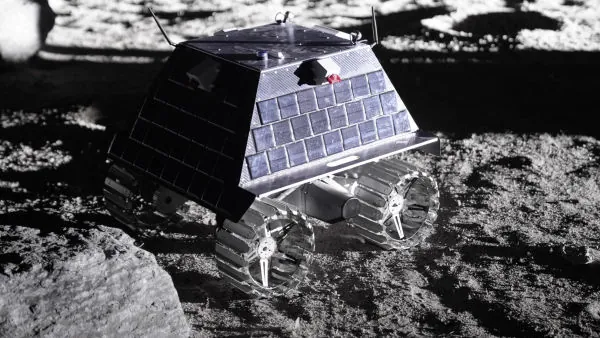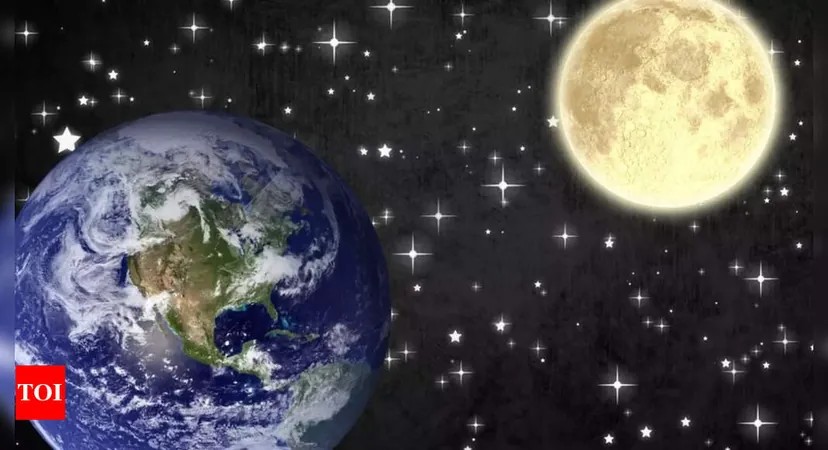
The Taurid Meteor Shower: A Celestial Spectacle or a Hidden Threat From Space?
2024-11-17
Author: Amelia
As the Taurid meteor shower graces the night sky, stargazers worldwide are poised to witness a captivating display of shooting stars and potentially bright fireballs. As the full moon wanes after November 15, conditions will improve for meteor viewing, with the best opportunities occurring right before moonrise.
While many revel in the beauty of this nightly spectacle, there’s an unsettling question lingering among scientists and enthusiasts alike: Is there a possibility that larger, more dangerous chunks of debris lurk within the Taurid streams, potentially capable of colliding with Earth and causing catastrophic damage?
The Source of the Taurids
The Taurids originate from Comet Encke, a relatively small comet about 3 miles in diameter that completes an orbit around the sun approximately every 3.3 years. Like the beloved Peanuts character Pig Pen, Comet Encke sheds dust and debris as it travels through the solar system. When these particles enter Earth's atmosphere at high speeds, they create the beautiful illusion of shooting stars as they vaporize and leave luminous trails.
However, it’s not just tiny particles that break apart from the comet. Larger fragments, comparable to pebbles or even small boulders, can create spectacular fireballs when they enter the atmosphere, some exploding with significant force.
The Threat of Catastrophic Collisions
The theory positing that larger mountain-sized debris from the Taurids could pose a danger to Earth has been termed “coherent catastrophism.” This theory suggests that Comet Encke is a remnant of a larger comet that fragmented, leaving behind a potential swarm of hazardous material. While some in the scientific community acknowledge that such debris may exist, mainstream astronomers cast doubt on the catastrophic predictions associated with them, largely due to the absence of observed concentrations of these massive objects.
Nonetheless, fringe theories have emerged alleging that Earth encountered a catastrophic swarm approximately 12,900 years ago, which led to mass extinctions of large mammals, like woolly mammoths, and the abrupt end of early human cultures such as the Clovis people. Proponents of these theories often cite sensational repercussions without strong scientific backing.
Historical Encounters: The Tunguska Event
Interestingly, not all theories surrounding potential meteoric threats are purely speculative. The infamous Tunguska event of 1908 serves as a stark reminder of the dangers posed by celestial objects. An explosive airburst event over Siberia flattened millions of trees and released energy equivalent to a large nuclear device. Studies suggest that this object, potentially measuring up to 160 feet in diameter, could have been a fragment from the Taurid meteor stream, as its trajectory aligns with known paths of the Taurids.
This isn't just theoretical; multiple observations from the 1975 Taurid meteor shower indicate significant fireball activity, which was even detected by seismometers on the Moon, suggesting impacts tied to the meteor stream.
What Lies Ahead?
Looking forward, astronomers anticipate that in 2032 and 2036, the Taurid swarm will approach Earth more closely than it has since 1975, raising the stakes for potential impacts. Will these years bring forth more encounters with Tunguska-sized objects?
While most scientists remain skeptical about the existence of a larger swarm posing significant risk, the potential consequences of even a smaller impact could still be catastrophic, capable of destroying a major city. This is where planetary defense takes center stage, as experts stress the necessity of ongoing research to assess and identify any potential threats.
As stargazers enjoy the awe of the Taurid meteor shower, it is essential to balance the wonder of celestial displays with an awareness of the risks lurking in the cosmos. Stay vigilant, as the night sky may hold more than just beauty—it may also hide ancient threats waiting to return.









 Brasil (PT)
Brasil (PT)
 Canada (EN)
Canada (EN)
 Chile (ES)
Chile (ES)
 España (ES)
España (ES)
 France (FR)
France (FR)
 Hong Kong (EN)
Hong Kong (EN)
 Italia (IT)
Italia (IT)
 日本 (JA)
日本 (JA)
 Magyarország (HU)
Magyarország (HU)
 Norge (NO)
Norge (NO)
 Polska (PL)
Polska (PL)
 Schweiz (DE)
Schweiz (DE)
 Singapore (EN)
Singapore (EN)
 Sverige (SV)
Sverige (SV)
 Suomi (FI)
Suomi (FI)
 Türkiye (TR)
Türkiye (TR)